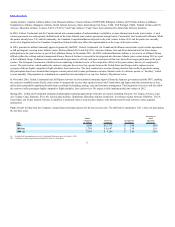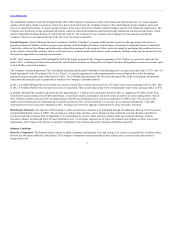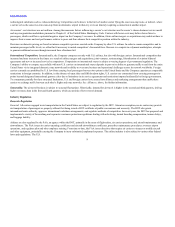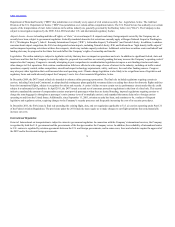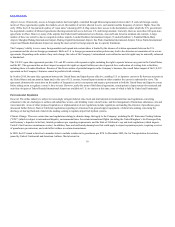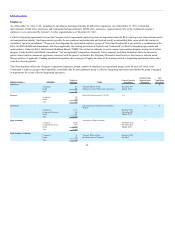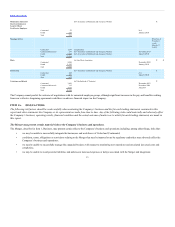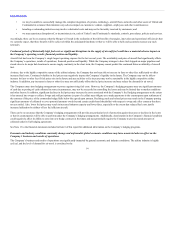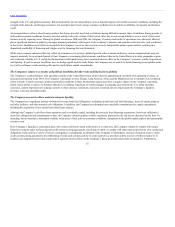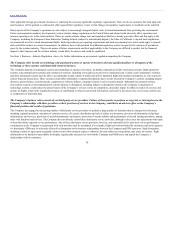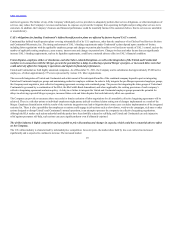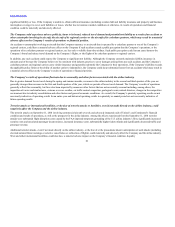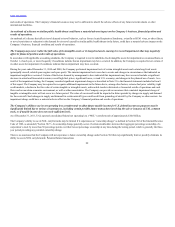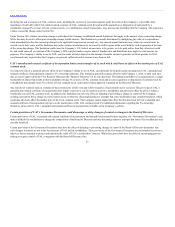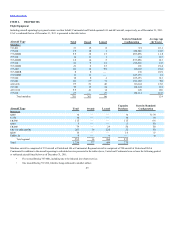United Airlines 2011 Annual Report Download - page 17
Download and view the complete annual report
Please find page 17 of the 2011 United Airlines annual report below. You can navigate through the pages in the report by either clicking on the pages listed below, or by using the keyword search tool below to find specific information within the annual report.
Table of Contents
constrained liquidity may limit the Company’s ability to withstand competitive pressures and limit its flexibility in responding to changing business and
economic conditions, including increased competition and demand for new services, placing the Company at a disadvantage when compared to its competitors
that have less debt, and making the Company more vulnerable than its competitors who have less debt to a downturn in the business, industry or the
economy in general.
The Company’s substantial level of indebtedness and non-investment grade credit rating, as well as market conditions and the availability of assets as
collateral for loans or other indebtedness, may make it difficult to raise additional capital to meet its liquidity needs on acceptable terms, or at all.
See Item 7, for further information regarding the Company’s
liquidity.
Certain of the Company’s financing agreements have covenants that impose operating and financial restrictions on the Company and its
subsidiaries.
Certain of the Company’s credit facilities and indentures governing its secured notes impose certain operating and financial covenants on the Company, on
United and its material subsidiaries, or on Continental and its subsidiaries. Such covenants require the Company, United or Continental, as applicable, to
maintain, depending on the particular agreement, minimum fixed charge coverage ratios, minimum liquidity and/or minimum collateral coverage ratios. A
decline in the value of collateral could result in a situation where the Company, United or Continental, as applicable, may not be able to maintain the required
collateral coverage ratio. In addition, the credit facilities and indentures contain other negative covenants customary for such financings.
The Company’s ability to comply with these covenants may be affected by events beyond its control, including the overall industry revenue environment and
the level of fuel costs, and the Company may be required to seek waivers or amendments of covenants, repay all or a portion of the debt or find alternative
sources of financing. The Company cannot provide assurance that such waivers, amendments or alternative financing could be obtained or, if obtained,
would be on terms acceptable to the Company. If the Company fails to comply with these covenants and is unable to obtain a waiver or amendment, an event
of default would result which would allow the lenders, among other things, to declare outstanding amounts due and payable. The Company cannot provide
assurance that it would have sufficient liquidity to repay or refinance such amounts if they were to become due. In addition, an event of default or declaration
of acceleration under any of the credit facilities or indentures could also result in an event of default under certain of the Company’s other financing agreements
due to cross-default and cross-acceleration provisions.
Extensive government regulation could increase the Company’s operating costs and restrict its ability to conduct its business.
Airlines are subject to extensive regulatory and legal oversight. Compliance with U.S. and international regulations imposes significant costs and may have
adverse effects on the Company. Laws, regulations, taxes and airport rates and charges, both domestically and internationally, have been proposed from time
to time that could significantly increase the cost of airline operations or reduce airline revenue. The Company cannot provide any assurance that current laws
and regulations, or laws or regulations enacted in the future, will not adversely affect its financial condition or results of operations.
Each of United and Continental provides air transportation under certificates of public convenience and necessity issued by the DOT. If the DOT altered,
amended, modified, suspended or revoked these certificates, it could have a material adverse effect on the Company’s business. The DOT is also responsible
for promulgating consumer protection and other regulations that may impose significant compliance costs on the Company. The FAA regulates the safety of
United’s and Continental’s operations. United and Continental operate pursuant to a single air carrier operating certificate issued by the FAA. From time to
time, the FAA also issues orders, airworthiness
16


